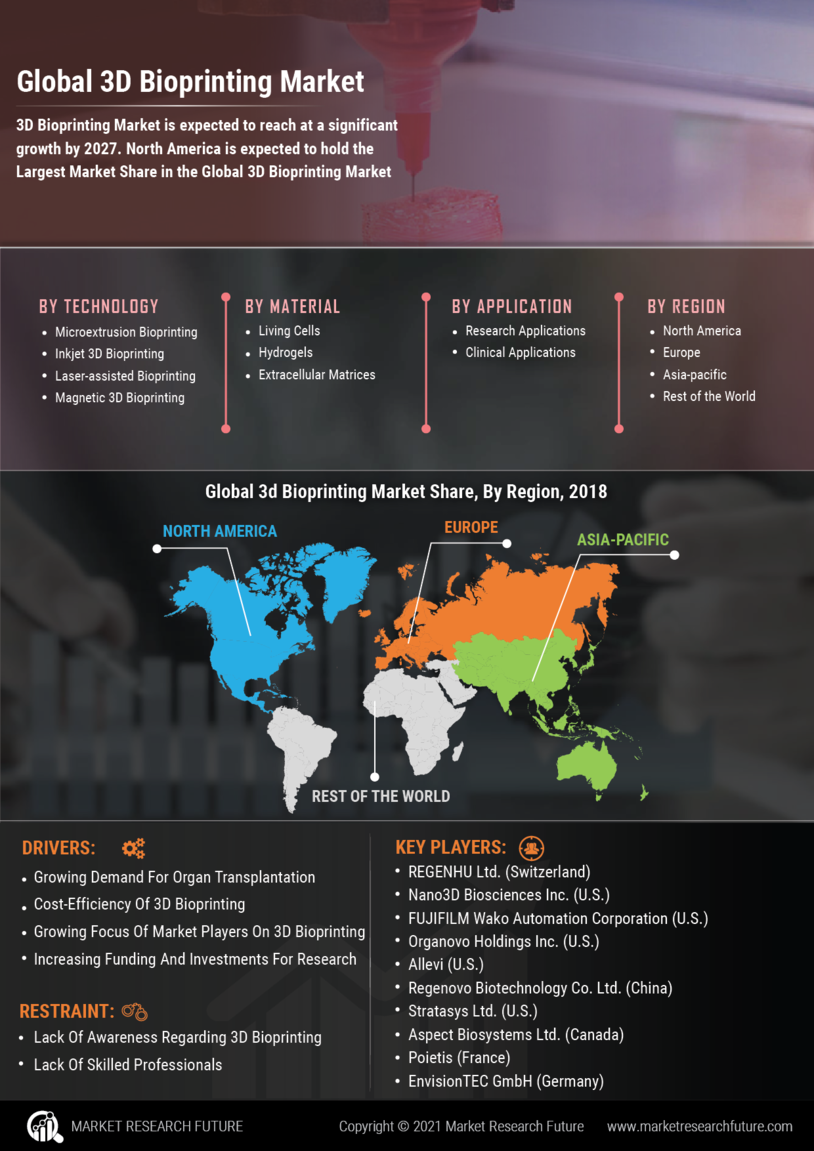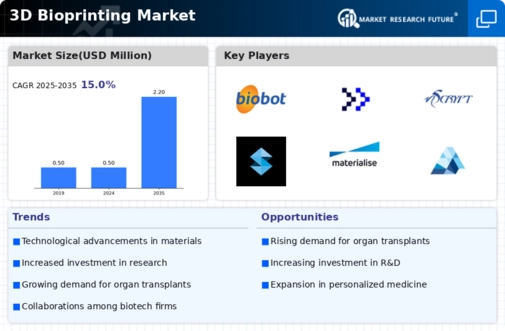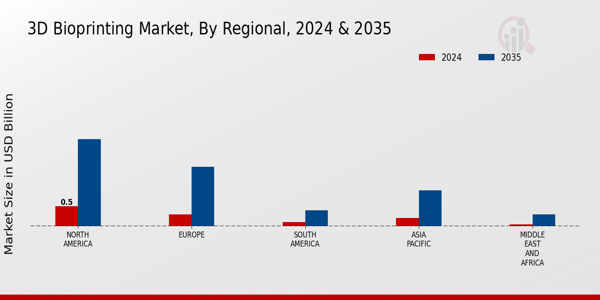Market Growth Projections
The Global 3D Bioprinting Market Industry is projected to experience substantial growth in the coming years. With a market value of 0.5 USD Billion in 2024, the industry is expected to expand significantly, reaching 2.2 USD Billion by 2035. This growth trajectory indicates a robust compound annual growth rate (CAGR) of 14.42% from 2025 to 2035. Factors contributing to this growth include technological advancements, increasing applications in healthcare, and rising demand for organ transplants. As the market evolves, it is likely to attract further investment and innovation, solidifying its position as a key player in the future of medical technology.
Technological Advancements
The Global 3D Bioprinting Market Industry is experiencing rapid technological advancements that enhance the capabilities of bioprinting. Innovations in materials, such as bioinks made from living cells, are improving the precision and viability of printed tissues. For instance, advancements in extrusion and laser-assisted bioprinting techniques allow for more complex structures to be created. This evolution in technology is expected to drive market growth significantly, with projections indicating a market value of 0.5 USD Billion in 2024. As these technologies continue to mature, they may facilitate the development of personalized medicine and tissue engineering applications.
Government Initiatives and Funding
Government initiatives and funding play a crucial role in the expansion of the Global 3D Bioprinting Market Industry. Various governments are investing in research and development to promote bioprinting technologies, recognizing their potential to transform healthcare. For example, funding programs aimed at supporting innovative bioprinting projects are becoming increasingly common. These initiatives not only foster technological advancements but also encourage collaboration between academic institutions and industry players. As a result, the market is expected to grow at a CAGR of 14.42% from 2025 to 2035, driven by enhanced research capabilities and increased public-private partnerships.
Rising Demand for Organ Transplants
The Global 3D Bioprinting Market Industry is likely to witness increased demand for organ transplants, driven by the growing prevalence of chronic diseases and organ failures. As the waiting lists for organ transplants continue to grow, bioprinting offers a promising solution to address this critical shortage. The ability to create functional tissues and organs could potentially reduce dependency on donor organs. By 2035, the market is projected to reach 2.2 USD Billion, reflecting the urgency of finding viable alternatives to traditional organ transplantation methods. This demand underscores the potential of bioprinting to revolutionize transplant medicine.
Increased Investment from Private Sector
The Global 3D Bioprinting Market Industry is benefiting from increased investment from the private sector, which is recognizing the commercial potential of bioprinting technologies. Venture capital firms and private equity investors are increasingly funding startups and established companies focused on bioprinting solutions. This influx of capital is fostering innovation and accelerating the development of new products and applications. As the market matures, these investments are likely to drive competition and enhance product offerings. The anticipated growth trajectory suggests that the market could reach 2.2 USD Billion by 2035, reflecting the confidence of investors in the future of bioprinting.
Growing Applications in Regenerative Medicine
The Global 3D Bioprinting Market Industry is expanding due to the growing applications of bioprinting in regenerative medicine. This field focuses on repairing or replacing damaged tissues and organs, which aligns with the capabilities of bioprinting technology. By enabling the creation of patient-specific tissues, bioprinting holds the potential to enhance healing processes and improve patient outcomes. As healthcare providers increasingly adopt these technologies, the market is likely to see substantial growth. The integration of bioprinting into clinical practices may lead to more effective treatments for conditions such as burns, injuries, and degenerative diseases.









